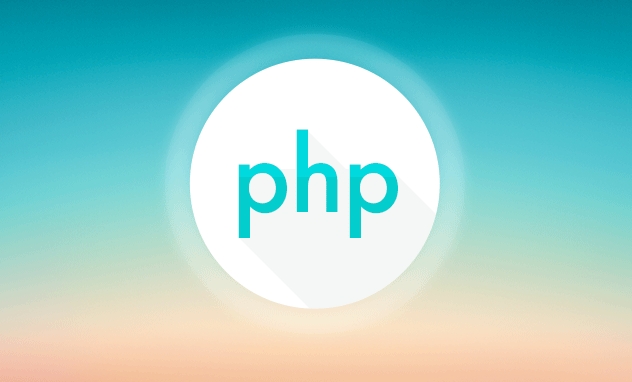 Backend Development
Backend Development
 PHP Tutorial
PHP Tutorial
 PHP development environment: from installation to the first project practice
PHP development environment: from installation to the first project practice
PHP development environment: from installation to the first project practice
Jun 29, 2025 am 02:13 AMTo start a PHP development environment, choose tools like XAMPP, WAMP, or MAMP for local setup. 1) Download and install XAMPP, start Apache and MySQL, place PHP files in htdocs. 2) Set up a structured project layout with separate folders for public files, source code, views, and assets. 3) Write a basic PHP script using echo, test it via localhost, enable error reporting for debugging. Confirm installation by accessing phpinfo(), and ensure proper file permissions to avoid errors during execution.

Starting a PHP development environment might seem like a small step, but it's the foundation of everything you'll build later. Whether you're working on a simple script or a full web application, getting your setup right early on saves headaches down the road.

Choosing Your Local Development Tools
The first thing you need is a way to run PHP locally. Most developers go with XAMPP, WAMP, or MAMP — they all bundle Apache, MySQL, and PHP into one easy-to-install package.

If you're using macOS, MAMP is straightforward. For Windows users, XAMPP tends to be popular because it gives you control over which services you start. There’s also Docker, which is more advanced but gives you better control and consistency across environments.
Here’s what most people do:

- Download and install XAMPP from the official site
- Start Apache and MySQL through the control panel
- Place PHP files in the
htdocsfolder to run them
No matter which tool you choose, make sure PHP is properly linked and that you can access phpinfo() through your browser. That’s how you confirm everything is working.
Setting Up a Basic Project Structure
Once PHP is running, the next step is organizing your project. A clean structure helps as things grow. Most beginners just drop files into the root, but that gets messy fast.
Instead, create folders for different parts of your app. Something like this:
/my-project
/public
index.php
/src
functions.php
/views
home.php
/assets
style.cssThis separates public-facing files from internal logic. You’ll route everything through public/index.php, include necessary files from /src, and use views for HTML templates. It’s not mandatory at first, but it makes scaling easier later.
One thing many overlook: file permissions. If your PHP scripts can’t write to certain directories (like for logs or uploads), you’ll hit errors that aren’t obvious. So always check folder permissions if something isn't saving or uploading correctly.
Writing Your First PHP Script
Now that everything is set up, let’s test it with a simple script. Go to your htdocs folder or your project's public directory and create a file called index.php. Put this inside:
<?php echo "Hello, PHP!"; ?>
Open your browser and visit http://localhost/index.php. If you see “Hello, PHP!” printed out, congrats — your environment works.
From here, you can start experimenting. Try including other files, connecting to MySQL, or building a basic form handler. Just remember to turn on error reporting during development by adding this at the top of your script:
ini_set('display_errors', 1);
error_reporting(E_ALL);That way, any issues will show up clearly instead of failing silently.
At this point, you’ve got a working local environment, a basic structure, and your first PHP script running. The rest is just building on these pieces — no magic involved, just practice and patience.
The above is the detailed content of PHP development environment: from installation to the first project practice. For more information, please follow other related articles on the PHP Chinese website!

Hot AI Tools

Undress AI Tool
Undress images for free

Undresser.AI Undress
AI-powered app for creating realistic nude photos

AI Clothes Remover
Online AI tool for removing clothes from photos.

Clothoff.io
AI clothes remover

Video Face Swap
Swap faces in any video effortlessly with our completely free AI face swap tool!

Hot Article

Hot Tools

Notepad++7.3.1
Easy-to-use and free code editor

SublimeText3 Chinese version
Chinese version, very easy to use

Zend Studio 13.0.1
Powerful PHP integrated development environment

Dreamweaver CS6
Visual web development tools

SublimeText3 Mac version
God-level code editing software (SublimeText3)
 PHP Variable Scope Explained
Jul 17, 2025 am 04:16 AM
PHP Variable Scope Explained
Jul 17, 2025 am 04:16 AM
Common problems and solutions for PHP variable scope include: 1. The global variable cannot be accessed within the function, and it needs to be passed in using the global keyword or parameter; 2. The static variable is declared with static, and it is only initialized once and the value is maintained between multiple calls; 3. Hyperglobal variables such as $_GET and $_POST can be used directly in any scope, but you need to pay attention to safe filtering; 4. Anonymous functions need to introduce parent scope variables through the use keyword, and when modifying external variables, you need to pass a reference. Mastering these rules can help avoid errors and improve code stability.
 How to handle File Uploads securely in PHP?
Jul 08, 2025 am 02:37 AM
How to handle File Uploads securely in PHP?
Jul 08, 2025 am 02:37 AM
To safely handle PHP file uploads, you need to verify the source and type, control the file name and path, set server restrictions, and process media files twice. 1. Verify the upload source to prevent CSRF through token and detect the real MIME type through finfo_file using whitelist control; 2. Rename the file to a random string and determine the extension to store it in a non-Web directory according to the detection type; 3. PHP configuration limits the upload size and temporary directory Nginx/Apache prohibits access to the upload directory; 4. The GD library resaves the pictures to clear potential malicious data.
 Commenting Out Code in PHP
Jul 18, 2025 am 04:57 AM
Commenting Out Code in PHP
Jul 18, 2025 am 04:57 AM
There are three common methods for PHP comment code: 1. Use // or # to block one line of code, and it is recommended to use //; 2. Use /.../ to wrap code blocks with multiple lines, which cannot be nested but can be crossed; 3. Combination skills comments such as using /if(){}/ to control logic blocks, or to improve efficiency with editor shortcut keys, you should pay attention to closing symbols and avoid nesting when using them.
 Tips for Writing PHP Comments
Jul 18, 2025 am 04:51 AM
Tips for Writing PHP Comments
Jul 18, 2025 am 04:51 AM
The key to writing PHP comments is to clarify the purpose and specifications. Comments should explain "why" rather than "what was done", avoiding redundancy or too simplicity. 1. Use a unified format, such as docblock (/*/) for class and method descriptions to improve readability and tool compatibility; 2. Emphasize the reasons behind the logic, such as why JS jumps need to be output manually; 3. Add an overview description before complex code, describe the process in steps, and help understand the overall idea; 4. Use TODO and FIXME rationally to mark to-do items and problems to facilitate subsequent tracking and collaboration. Good annotations can reduce communication costs and improve code maintenance efficiency.
 How Do Generators Work in PHP?
Jul 11, 2025 am 03:12 AM
How Do Generators Work in PHP?
Jul 11, 2025 am 03:12 AM
AgeneratorinPHPisamemory-efficientwaytoiterateoverlargedatasetsbyyieldingvaluesoneatatimeinsteadofreturningthemallatonce.1.Generatorsusetheyieldkeywordtoproducevaluesondemand,reducingmemoryusage.2.Theyareusefulforhandlingbigloops,readinglargefiles,or
 Learning PHP: A Beginner's Guide
Jul 18, 2025 am 04:54 AM
Learning PHP: A Beginner's Guide
Jul 18, 2025 am 04:54 AM
TolearnPHPeffectively,startbysettingupalocalserverenvironmentusingtoolslikeXAMPPandacodeeditorlikeVSCode.1)InstallXAMPPforApache,MySQL,andPHP.2)Useacodeeditorforsyntaxsupport.3)TestyoursetupwithasimplePHPfile.Next,learnPHPbasicsincludingvariables,ech
 How to access a character in a string by index in PHP
Jul 12, 2025 am 03:15 AM
How to access a character in a string by index in PHP
Jul 12, 2025 am 03:15 AM
In PHP, you can use square brackets or curly braces to obtain string specific index characters, but square brackets are recommended; the index starts from 0, and the access outside the range returns a null value and cannot be assigned a value; mb_substr is required to handle multi-byte characters. For example: $str="hello";echo$str[0]; output h; and Chinese characters such as mb_substr($str,1,1) need to obtain the correct result; in actual applications, the length of the string should be checked before looping, dynamic strings need to be verified for validity, and multilingual projects recommend using multi-byte security functions uniformly.
 Quick PHP Installation Tutorial
Jul 18, 2025 am 04:52 AM
Quick PHP Installation Tutorial
Jul 18, 2025 am 04:52 AM
ToinstallPHPquickly,useXAMPPonWindowsorHomebrewonmacOS.1.OnWindows,downloadandinstallXAMPP,selectcomponents,startApache,andplacefilesinhtdocs.2.Alternatively,manuallyinstallPHPfromphp.netandsetupaserverlikeApache.3.OnmacOS,installHomebrew,thenrun'bre





